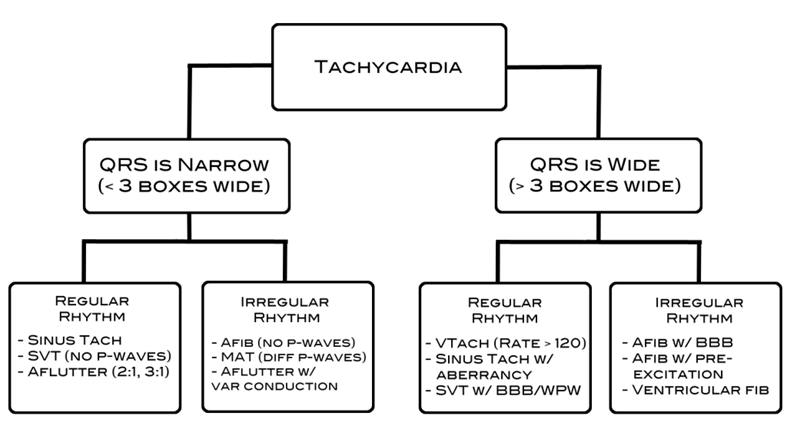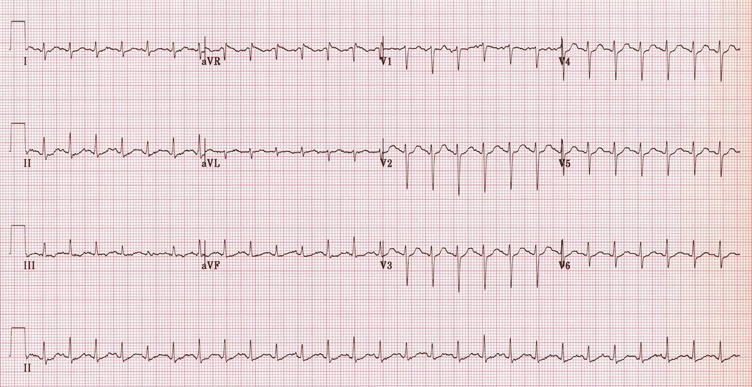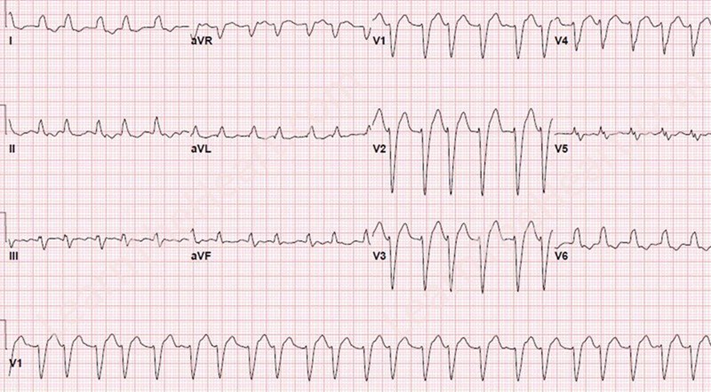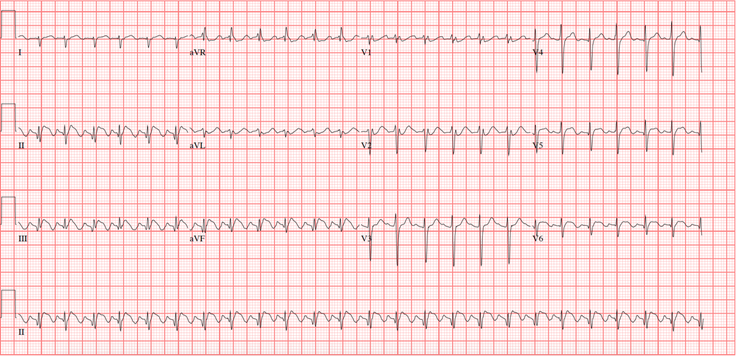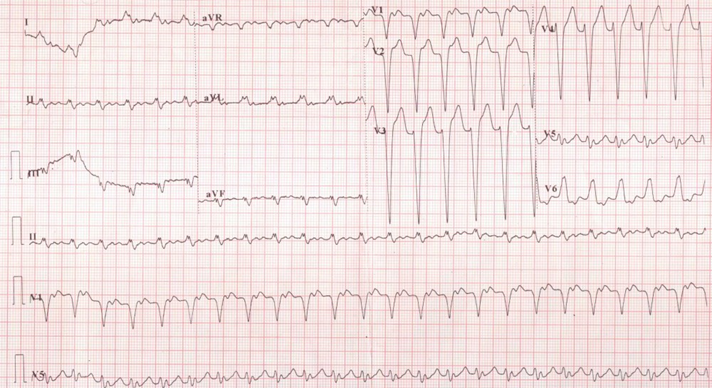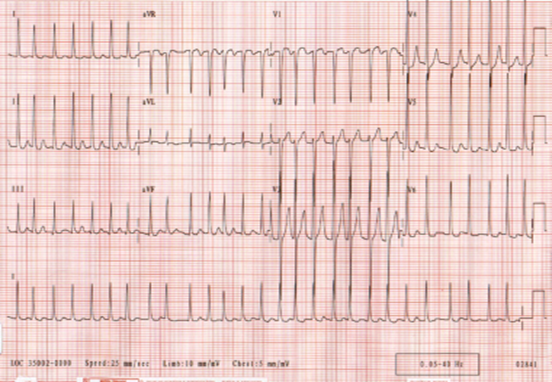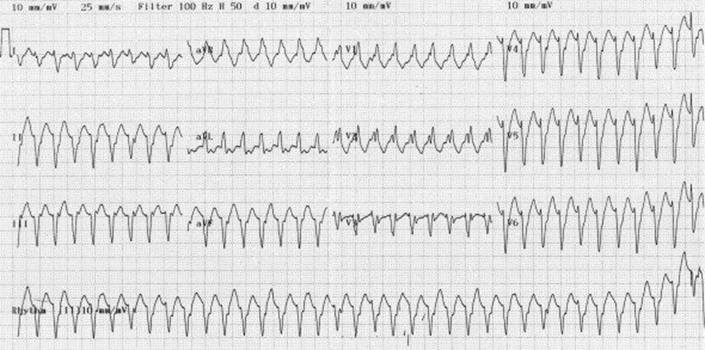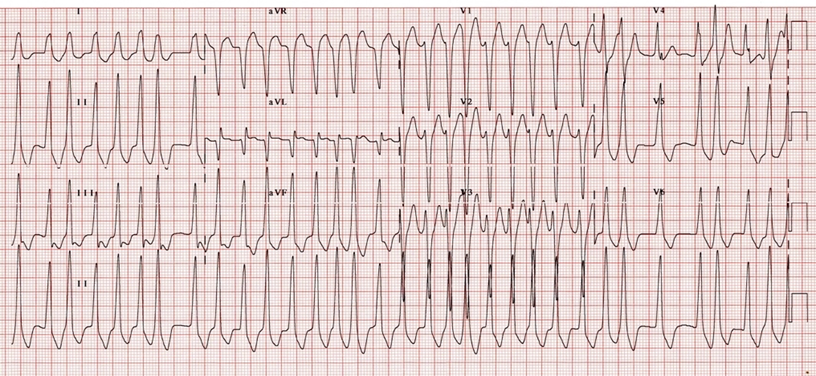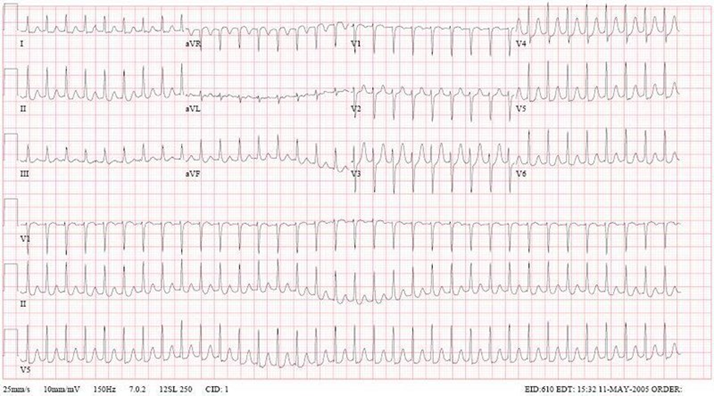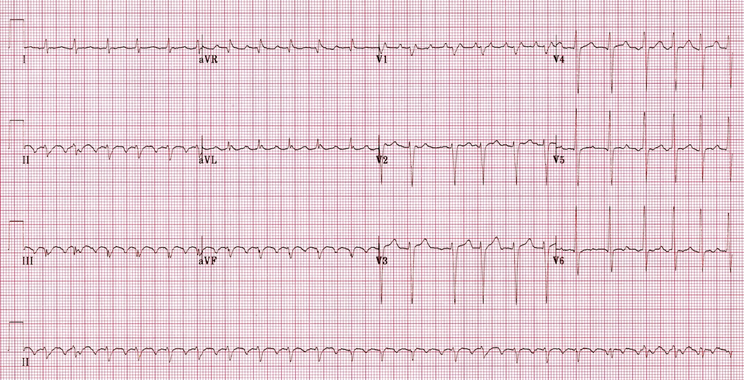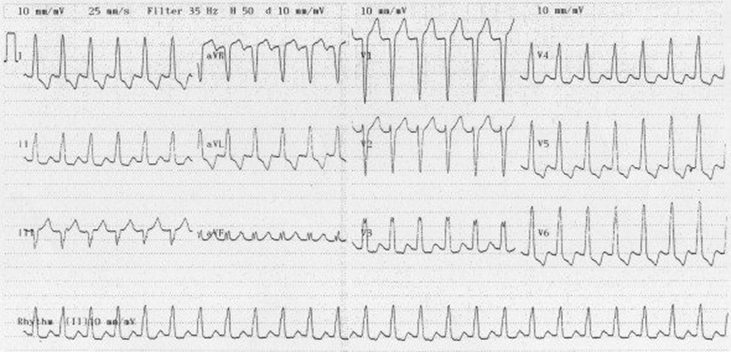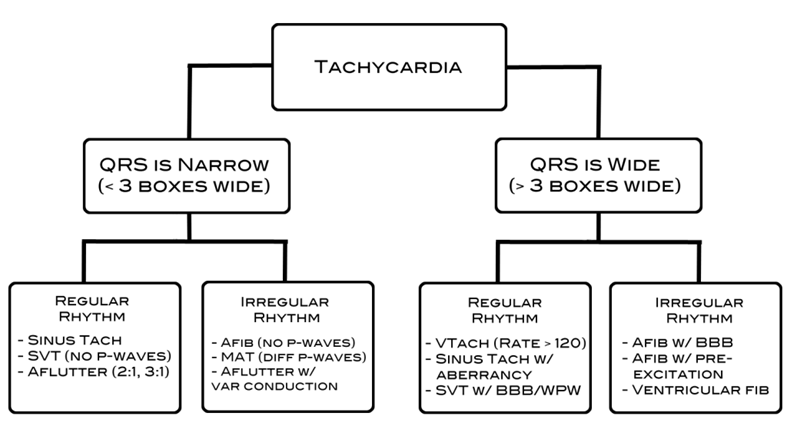Hey #MedStudentTwitter, want to learn how to quickly master reading rapid rhythm ECGs ahead of your EM elective? Here is how to look like an all-star. All the images in the tweets below were taken from a google image search, credit goes to whoever posted them originally.
The easiest way is to categorize any tachycardic ECG into regular or irregular and narrow or wide. This leads to four categories and each one has a small ddx. By knowing the 3 things in each, it is easy to make a quick DDx and quickly narrow it into the right diagnosis.
The tweets that follow will have an image of each rhythm, reiterate the DDx for the individual category, and give a tip to differentiating the correct diagnosis from the others within the category.
Narrow/Regular:
DDX: ST, SVT, AFlutter
Dx: Aflutter. Sawtooth pattern Pwaves with rate at 150 exactly (2:1 conduction)
DDX: ST, SVT, AFlutter
Dx: Aflutter. Sawtooth pattern Pwaves with rate at 150 exactly (2:1 conduction)
Wide/Regular
DDx: VT, SVT or ST with aberrant conduction
Dx: ST with LBBB; normal P waves give it away
DDx: VT, SVT or ST with aberrant conduction
Dx: ST with LBBB; normal P waves give it away
Narrow/Irregular
DDx: Afib, Multifocal Atrial Tach (MAT), Aflutter with variable conduction
Dx: Afib; lack of Pwaves differentiates this from the others
DDx: Afib, Multifocal Atrial Tach (MAT), Aflutter with variable conduction
Dx: Afib; lack of Pwaves differentiates this from the others
Wide/Irregular
DDx: Afib with LBBB, Afib with WPW, Torsades or VF
Dx: Torsades; classic twisting around the isoelectric point
DDx: Afib with LBBB, Afib with WPW, Torsades or VF
Dx: Torsades; classic twisting around the isoelectric point
Wide/Regular
DDx: Wide/Regular
DDx: VT, SVT or ST with aberrant conduction
Dx: VT; when in doubt treat wide regular as VT unless otherwise proven previous BBB; note the extreme R axis, a giveaway this is VT
DDx: Wide/Regular
DDx: VT, SVT or ST with aberrant conduction
Dx: VT; when in doubt treat wide regular as VT unless otherwise proven previous BBB; note the extreme R axis, a giveaway this is VT
Narrow/Irregular
DDx: Afib, Multifocal Atrial Tach (MAT), Aflutter with variable conduction
Dx: MAT; check out the rhythm strip, multiple different P wave morphologies
DDx: Afib, Multifocal Atrial Tach (MAT), Aflutter with variable conduction
Dx: MAT; check out the rhythm strip, multiple different P wave morphologies
Wide/Irregular
DDx: Afib with LBBB, Afib with WPW, Torsades or VF
Dx: Afib with WPW. One of the fastest rates you& #39;ll see, this is a common EM board question. Rate is like 250-300
DDx: Afib with LBBB, Afib with WPW, Torsades or VF
Dx: Afib with WPW. One of the fastest rates you& #39;ll see, this is a common EM board question. Rate is like 250-300
Narrow/Irregular:
DDx: AFib, MAT, Aflutter with variable conduction
Dx: Flutter with variable conduction; sawtooth p waves
DDx: AFib, MAT, Aflutter with variable conduction
Dx: Flutter with variable conduction; sawtooth p waves
Wide/Regular
DDx: VT, SVT or ST with aberrant conduction
Dx: SVT with BBB; no pwaves; unlike VT, the axis here is normal; after adenosine and cardioversion, the underlying BBB persists confirming the dx
DDx: VT, SVT or ST with aberrant conduction
Dx: SVT with BBB; no pwaves; unlike VT, the axis here is normal; after adenosine and cardioversion, the underlying BBB persists confirming the dx
That& #39;s all folks! Keep this algorithm in your head! Again all credit for the images are to whoever anonymously posted them online in the first place!

 Read on Twitter
Read on Twitter